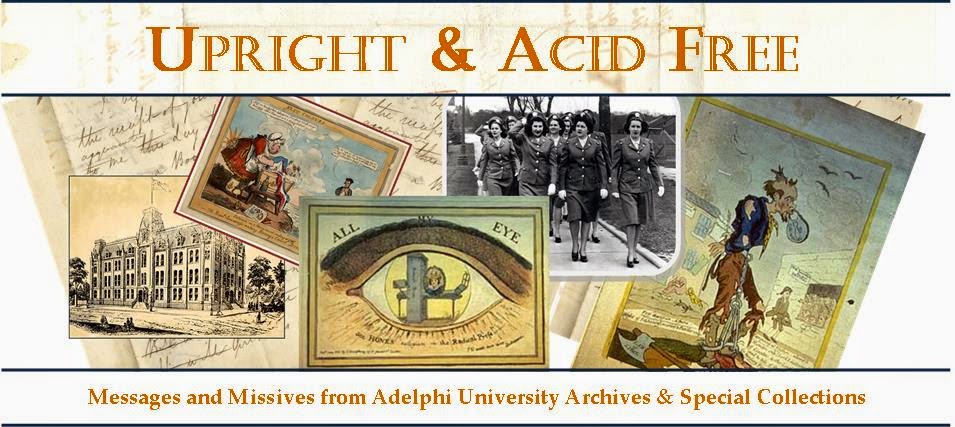As part of my MSLIS program at LIU Post, I am completing an
internship at Adelphi University Archives and Special Collections where I have
been tasked with processing the manuscripts and photographs in the Robert R. McMillan Political Papers and Memorabilia Collection.
 |
| McMillan with Pres. Ronald Reagan |
 |
| McMillan alongside Pres. Richard Nixon |
Lawyer, businessman and journalist Robert R. McMillan (1932- )
served as an Assistant to Richard Nixon and acted as an adviser to Presidents
Reagan and Bush. He was appointed to the Panama Canal Commission by Pres.
George H.W. Bush, and served as the Chairman of the Commission’s Board of
Directors from 1993-1994. Beginning in
1990 Mr. McMillan gifted to Adelphi Special Collections his extensive collection of material documenting the history of the Panama Canal and the Panama Canal Commission. Mr. McMillan
also mounted an unsuccessful run for the U.S. Senate in 1988. The McMillan Political Collection contains
many interesting photographs, letters and artifacts related to Mr. McMillan’s
public service, including letters sent to Mr. McMillan from President Nixon, event
invitations from President Reagan, and Christmas cards from George H. W. Bush.
The
photographs and letters related to McMillan’s relationship with Richard Nixon
are particularly fascinating. Their
correspondence indicates a quite personal affinity and acquaintance which
continued long after Nixon had left office.
The collection also contains letters from Ronald Reagan and memorabilia
from the administration of President George H.W. Bush. |
| McMillan meeting Pope John Paul II |
McMillan completed
his undergraduate degree at Adelphi University and has served as a member of
the university’s Board of Trustees.
--by John Abraham












_crooped.jpg)




